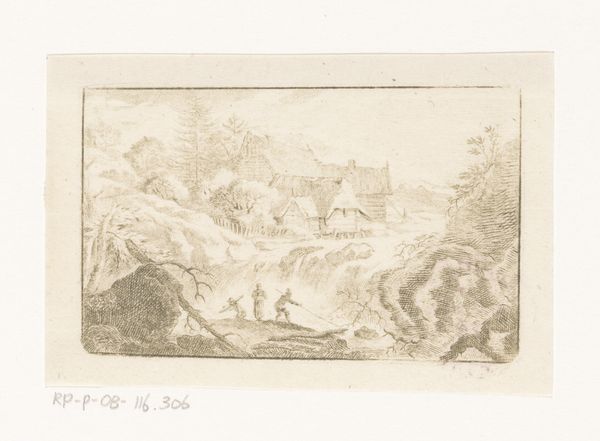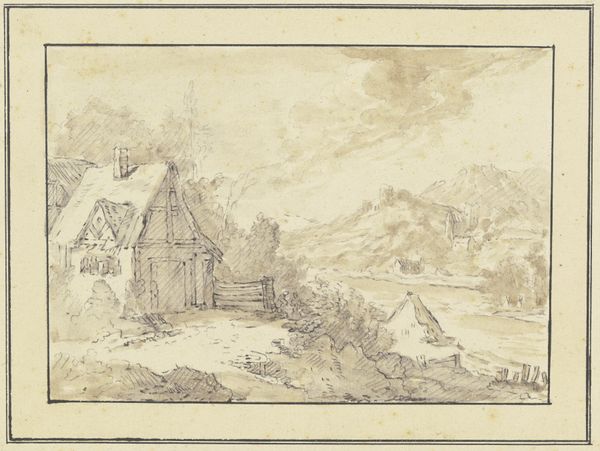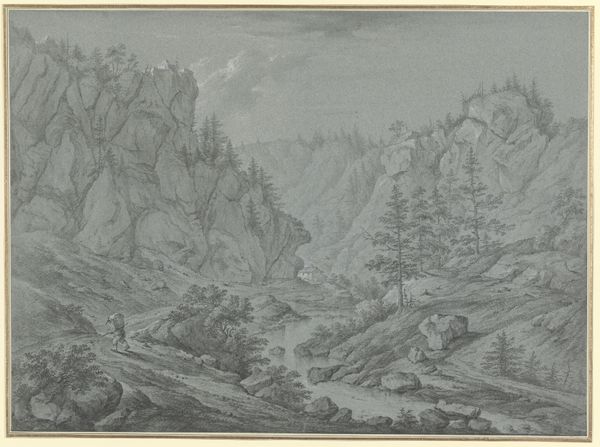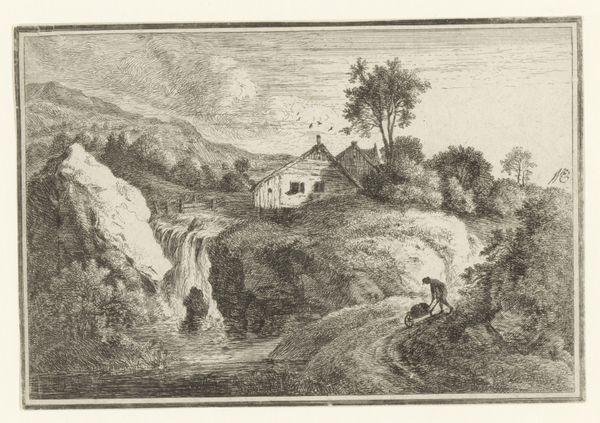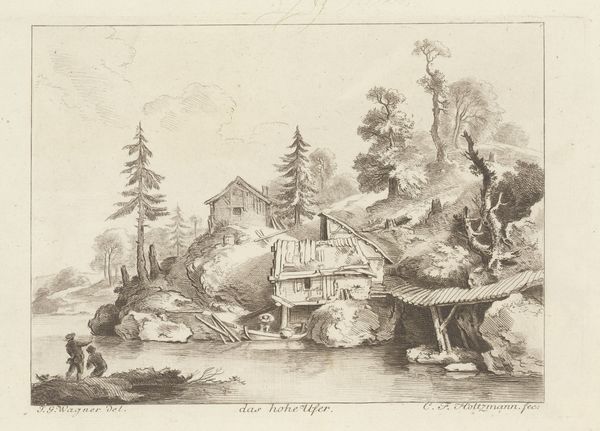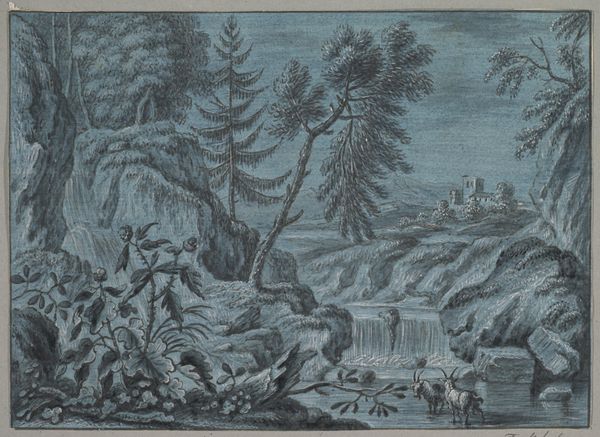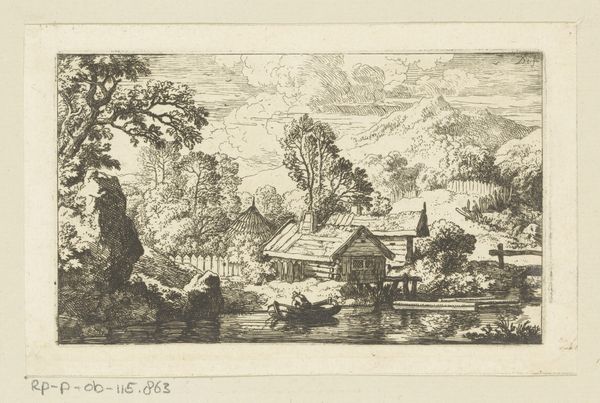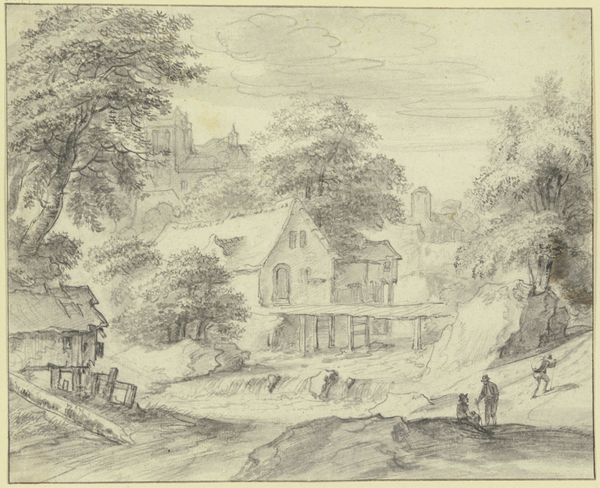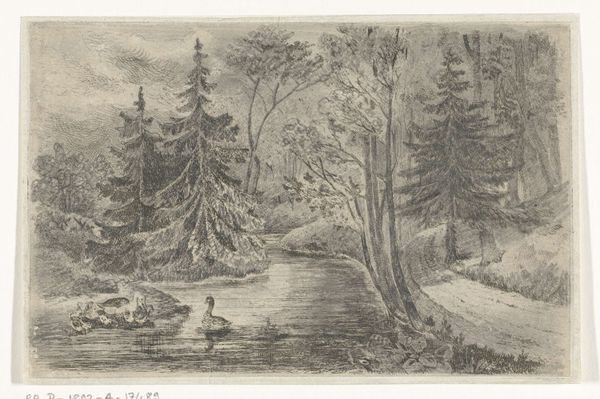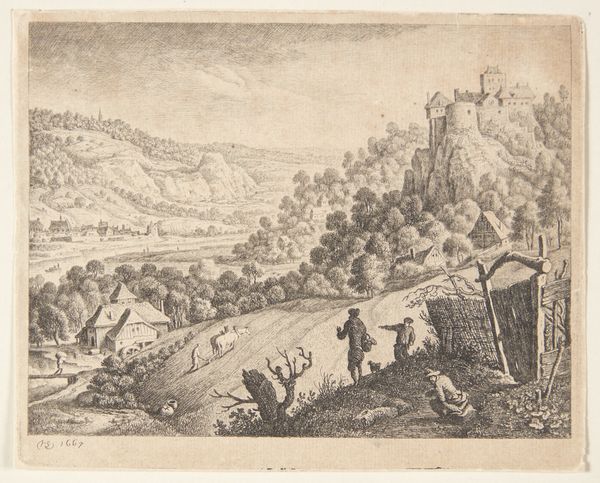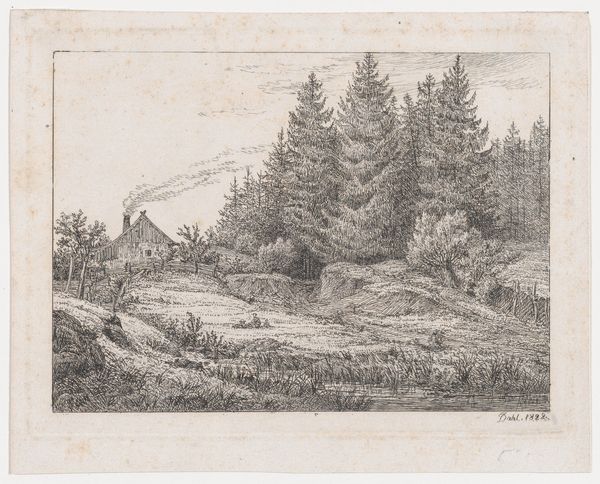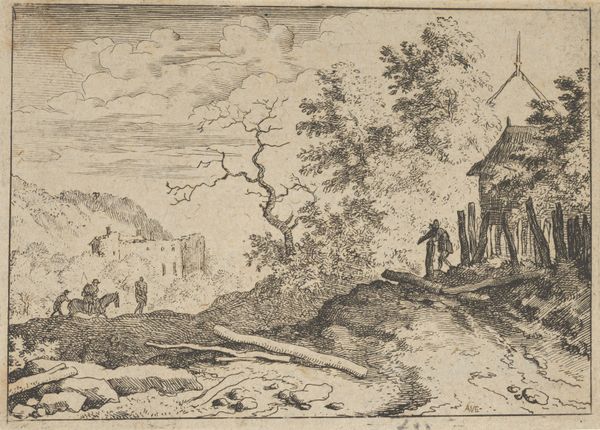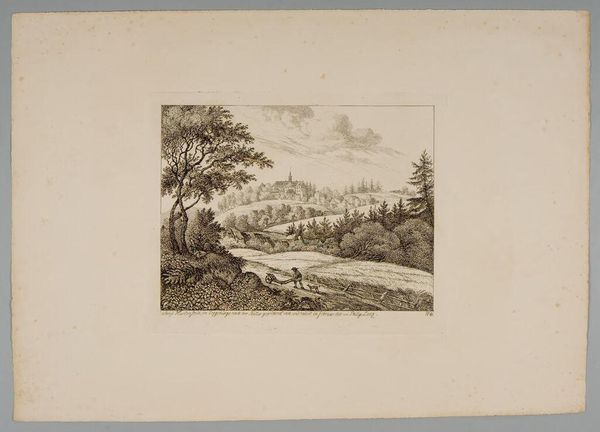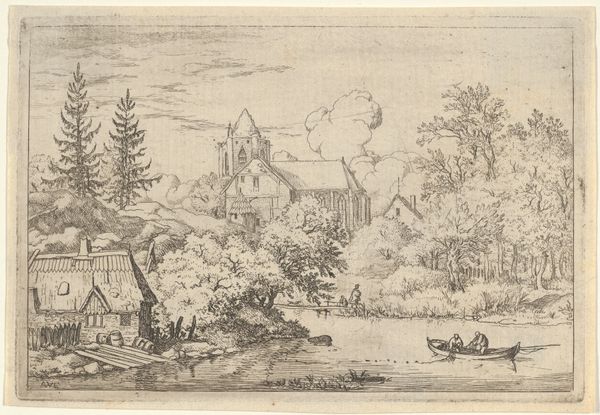
print, engraving
# print
#
old engraving style
#
landscape
#
waterfall
#
genre-painting
#
engraving
Dimensions: height 59 mm, width 90 mm
Copyright: Rijks Museum: Open Domain
Editor: This is "Landschap met huizen achter een waterval," or "Landscape with Houses Behind a Waterfall," an engraving by Carl Friedrich Holtzmann from around 1750 to 1811. It's quite detailed, but evokes a sense of calm industry, with figures near the water. What can you tell me about the symbols and hidden meanings within this landscape? Curator: Landscapes, even seemingly simple ones, often function as powerful carriers of cultural memory. Notice how the waterfall isn't just a natural element; it powers the structures, integrating human life directly with nature's force. What do you make of the figures in the foreground, interacting with the water? Editor: They appear to be working, maybe fishing? It's a small detail but feels very human-scaled against the grandness of nature. Curator: Exactly. This interplay is key. The figures, rendered relatively small, serve to highlight the grandeur of the natural world but also demonstrate humanity's continuous endeavor to harness it. The waterfall, a symbol of power and purity, juxtaposes with the human struggle for sustenance. What emotions does this visual dialogue trigger for you? Does it speak to our relationship with the environment today? Editor: I think so, yes. There's something about the quaintness of the scene, and how closely tied the community is to the land, that feels both romantic and maybe a bit cautionary, given today's environmental issues. Curator: Precisely. It's in this dialogue between nature and humanity that the engraving finds its symbolic weight. The houses nestled behind the falls suggest not just a co-existence but a reliance, and a certain vulnerability too. Holtzmann invites us to reflect on that very delicate balance. It resonates deeply, doesn't it? Editor: It really does. I appreciate understanding how much deeper these images go beyond their surface appearance, how they act as documents of cultural thinking. Curator: Absolutely. Visual language like this helps us tap into collective memory, letting us engage in the unfolding narrative of art and society.
Comments
No comments
Be the first to comment and join the conversation on the ultimate creative platform.
